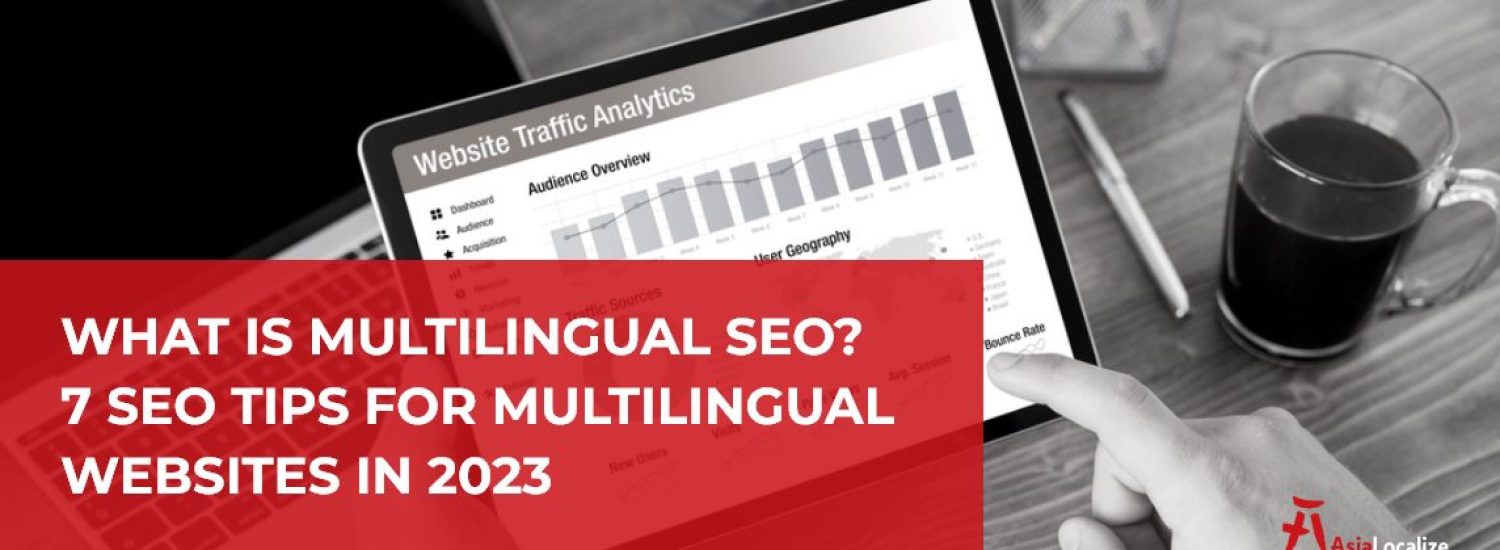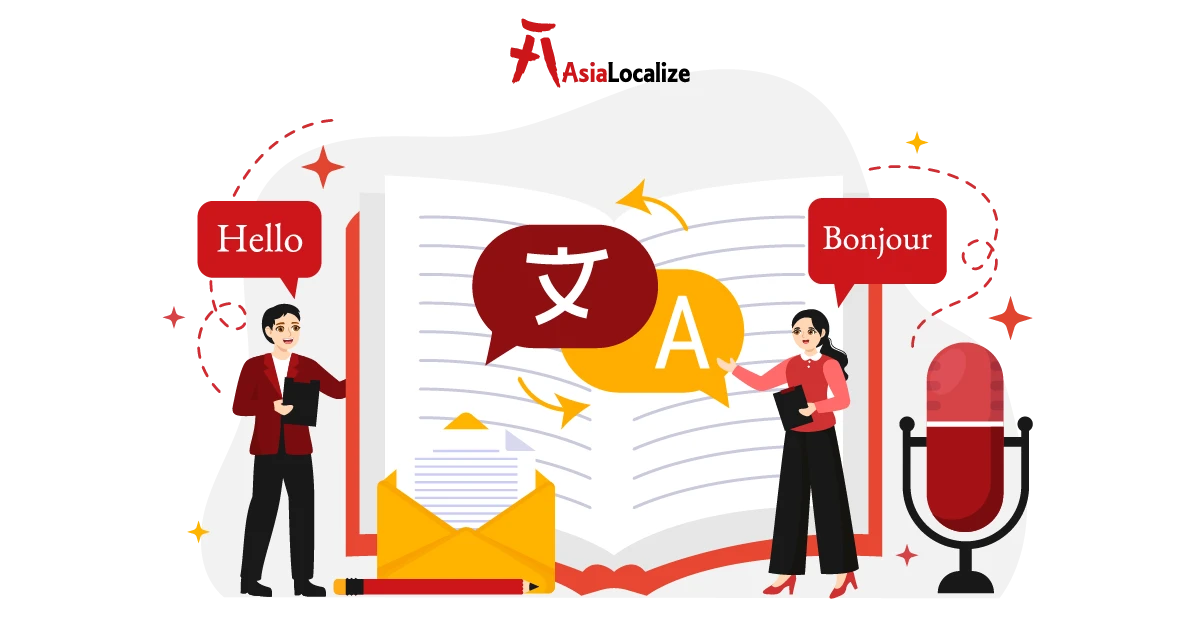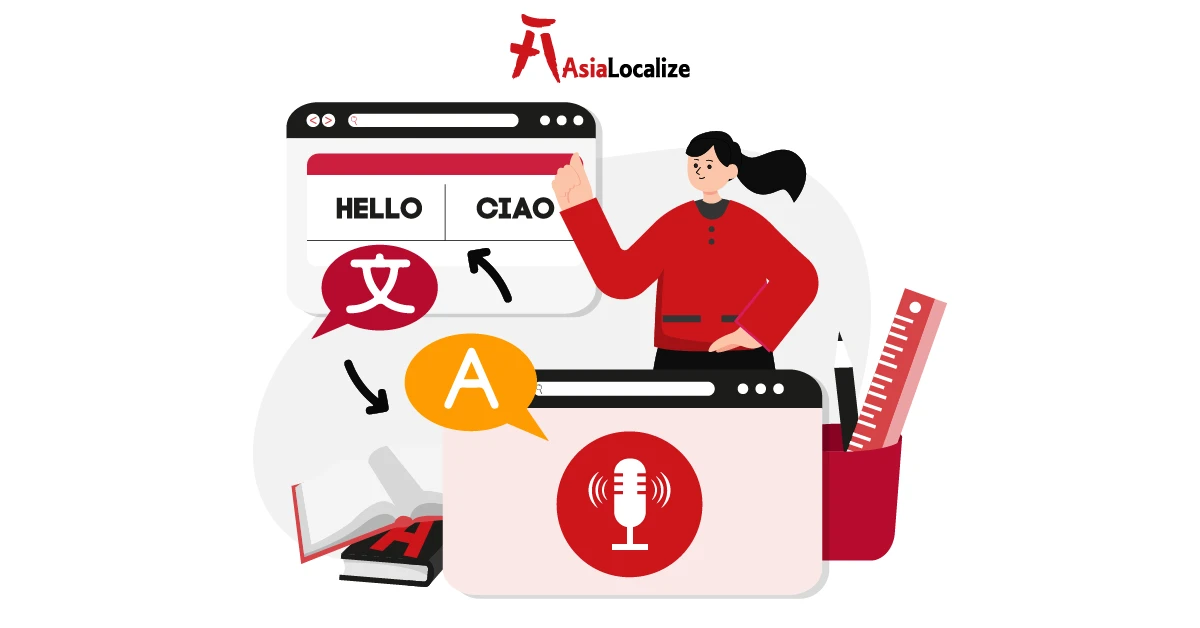In today’s competitive world, operating in one language is no longer sufficient to pull it off over your competition. Going international and speaking multilingual languages are mandatory to play it right, regardless of your industry. And to do it the right way, your first step towards this goal should be focused on your website. That’s where website translation services and Multilingual SEO localization step in.
Did you know that search queries account for 80% of your website’s traffic? And international SEO can help maximize this traffic in international markets. Through this blog, you will have all you need to get the most out of SEO, providing you with the most effective SEO tips for multilingual websites in 2023. Let’s dive in!
The Difference Between Multilingual SEO and International SEO
Before we get the chance to share with you the best SEO tips for multilingual websites in 2023, we would like to provide some background on the key difference between multilingual SEO and international SEO. Multilingual SEO is the process of optimizing your website content for multiple languages to rank higher on search engines, achieving better visibility and organic presence in foreign markets.
Sometimes, you might need your website to support different languages in the same country. For example, in Belgium, where three national languages are spoken, optimizing content in French, German, and Dutch is crucial.International SEO is the process of optimizing your website content for the global market, but it doesn’t necessarily mandate operating in multiple languages.
Instead, it focuses on increasing traffic and improving accessibility for international audiences of the same language spoken in different regions yet have different dialects. For example, some businesses choose to go for all English-speaking markets, which mandates tackling different dialects, cultures, and search behavior of different regions.So, international SEO is based on the location of your target markets, while multilingual SEOfocuses on targeting specific languages. However, if you decide to operate only in one language, taking the “localization” path is your only option. Even with one language, there may be different dialects, search habits, language use, and cultural variations to take into account.

What is SEO Translation?
It’s just a part of multilingual SEO, which involves translating and optimizing your website content simultaneously to improve search rankings across various languages and regions. But that’s not all; SEO translation entails the following and more:
- Choosing the most relevant and appropriate keywords for your target market after thorough keyword research
- Optimizing meta titles and descriptions
- Selecting culturally relevant topics
- Translating visuals and other media materials, whether it’s audio, video, or images
- Creating natural-sounding and well-targeted optimized content as well
SEO Translation Process
- Keyword Preparation
- Search Volume Check
- Keyword Translation
- Website Optimization
- Meta Tags Optimization

What are the Advantages of Multilingual SEO?
An SEO case study conducted by Forexsuggest that included 41 languages revealed that cross-language and -regional content increased:

Multilingual SEO services can do wonders for your business, but only if done right! Through this powerful tool, you can reap the following benefits:
1. Reach Your Potential Customers
Once you start to kick off with a well-structured multilingual strategy, chances are your website will be on the first pages of search engines. And in return, that will increase your reach and visibility.
2. Increase Sales
Increasing reach and traffic will result in more leads and conversions. Research conducted by CSA has revealed that nearly 76% of customers choose products available in their native language over others.
3. Reduce Bounce Rate
Typically, most websites have a bounce rate ranging between 26% and 70%. But with well-articulated multilingual SEO and website translation, the percentage can be reduced. When visitors land on your website and find your content in their mother tongue, they will likely stay and stick to it for extended periods.

4. Earn your Target Audience’s Trust
 According to Vintage Productions, 46% of website visitors will trust your services and products if they are provided in their native languages.
And the Harvard Business Review has revealed that 56.2% of consumers prioritize information in their spoken language over price. Obviously, you can gain a competitive advantage in your target market by optimizing your website for different languages.

5. Save More Money
One of the main advantages of multilingual SEO is that organic clicks are free, unlike paid advertisements. Once you rank high on search results, you can enjoy the same advantages as paid ads without paying a penny. And allocate your budget to the areas that need it the most.
International SEO Stats to Your Surprise!

Best SEO Tips for Multilingual Websites in 2023
Never lose a chance to grow faster and bigger in your target countries. Now that you’ve got some insights about the types of SEO and their benefits, let’s explore the most useful SEO tips for multilingual websites in 2023.
One Language Per Page = Better Ranking
Operating in multiple languages doesn’t mean bringing together more than one language on each page. It’s imperative to stick only to one language on each page to avoid confusing your audience and hurting your search engine ranking.
Even Google recommends using different URLs for different language versions and ensuring the intended language is obvious.
Thorough Keyword Research Can Save the Day
Never assume that your target audience will search for the same keywords as your local market. People use different keywords based on their location and cultural backgrounds to search for services and products.
For example, a “jumper” or a “jersey” in British and Australian English is a “sweater” in American English! So, if you are a clothing business targeting American people, and while all 3 words technically mean the same thing, your target audience won’t be using “jumper” or “jersey” in their search queries.Accordingly, translating keywords is not enough. Conducting thorough keyword research coupled with keyword localization, on the other hand, is necessary to make your business relevant to your intended audience and rank high in SERPs.
Hreflang Tags are Necessary
For multilingual sites, hreflang tags are the only indicator of the page’s language and region. Without them, search engines will never read and understand that the page is intended for multiple areas and that the content isn’t duplicated. If not considered, this will undoubtedly hurt your ranking. So, what exactly are hreflang tags? They are HTML tags added to either your sitemap or the page header. They provide better clarity for search engines as to which language your page is in. Hreflang is a two-letter combination that indicates the language code, followed by a dash, and then the country code. Look at these examples:
- en-au
- en-gb
- fr-fr
These tags are not intended for entire regions (such as Africa), but only countries.
Become Well-Acquainted with the Commonly Used Search Engines in Your Target Region
Each country has its own search engine, characterized by a whole set of unique ranking factors. Consequently, it’s better to build your multilingual SEO strategy according to your target market’s needs and search engine requirements. While Google gets the lion’s share in almost 219 regions compared to other search engines, other countries, such as China and Russia, use other ones. Here is a list of the most well-known search engines for some countries all over the world:
- China: Baidu, Shenma Inc., Sogou, Google China, and Yahoo! Hong Kong
- Japan: Goo, Infoseek Japan, Google Japan
- Korea: Daum and Naver
- France: Qwant, Lycos France, Google France, and Yahoo! France
- Germany: Yahoo! Germany, Aladin, Suchmaschine.com, Lycos Germany, bellnet.com, Fireball, MSN Deutschland, LEO – Link Everything Online, Google Deutschland, YellowMap, and Web.de
- Italy: Yahoo! Italia, Virgilio, and Google Italia
- Denmark: Jubii
- Russia: Yandex and Google
- South Africa: Ananzi South Africa
- Canada: Yahoo! Canada, Canada.com, National Library of Canada, Search Canada
- Brazil: Cade, Yahoo! Brasil, MSN Brasil, and Google Brasil
Link Building is Integral
Link building is the process of getting links from other websites to your site. It can be a real game changer for all businesses slogging through international markets and can actually help them rank higher on search engines. However, this step requires the help of a professional language partner specialized in your target language and market. This will also aid in identifying the most popular websites in your target region and industry.
And, Of Course, Localize and Translate Your Website Content!
It’s essential to keep in mind that when translating your website, it’s not just the message that matters. Paying attention to other elements such as currency, dates, measurements, and phone numbers is also crucial. And make sure that they are formatted in the most appropriate way for your target market. Take the time to review your website and ensure that everything is visible and easy to navigate for all visitors. From privacy policies and terms and conditions to error messages and cookies, adapt all your website content for your target customer and prioritize user experience.
Avoid AI-Written Content
Especially for Google, it’s not advisable to use AI-written content for your international website. Google’s algorithms are designed to assess the quality and nature of human-written content, meaning only natural-sounding text will rank at the top.
And let’s face it; AI won’t ever be able to deliver the quality needed to look humanly written. Accordingly, it’s essential to work hand in hand with a professional machine translation post-editor if you decide to go for AI-generated translations.
The Takeaway
After we have unveiled the best 7 SEO tips for multilingual websites in 2023, it’s time to take your global business to the next level. Integrate these tips into your multilingual SEO strategy, and we can guarantee you will climb to the first page.
Or maybe all you have to do is have the proper support of a professional language provider such as AsiaLocalize, a 15-year ISO-certified SEO translation company specializing in the Asian region.






